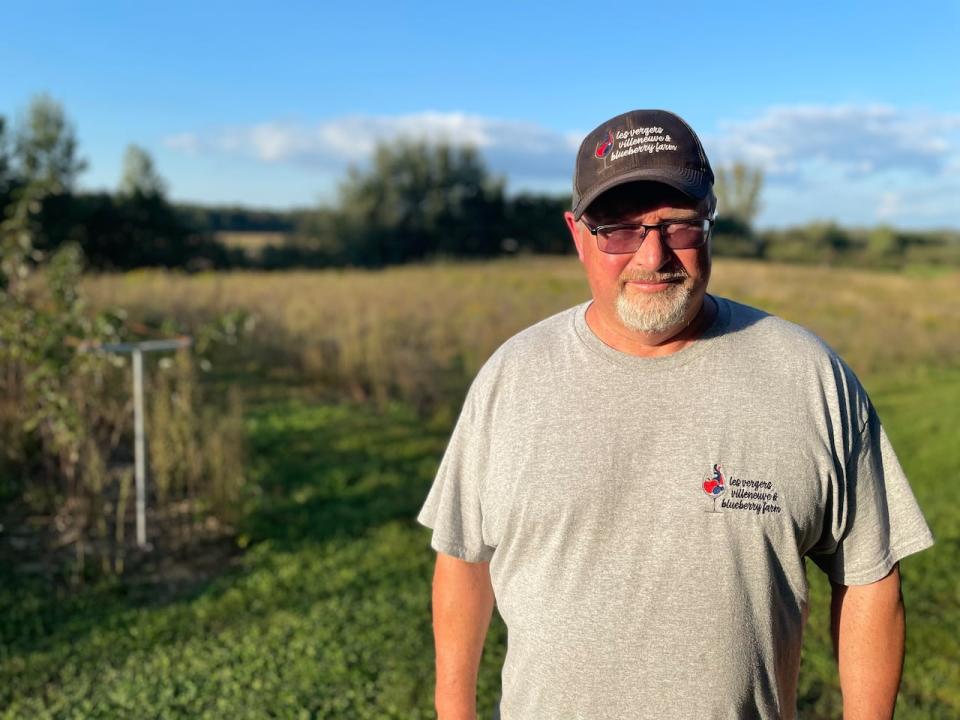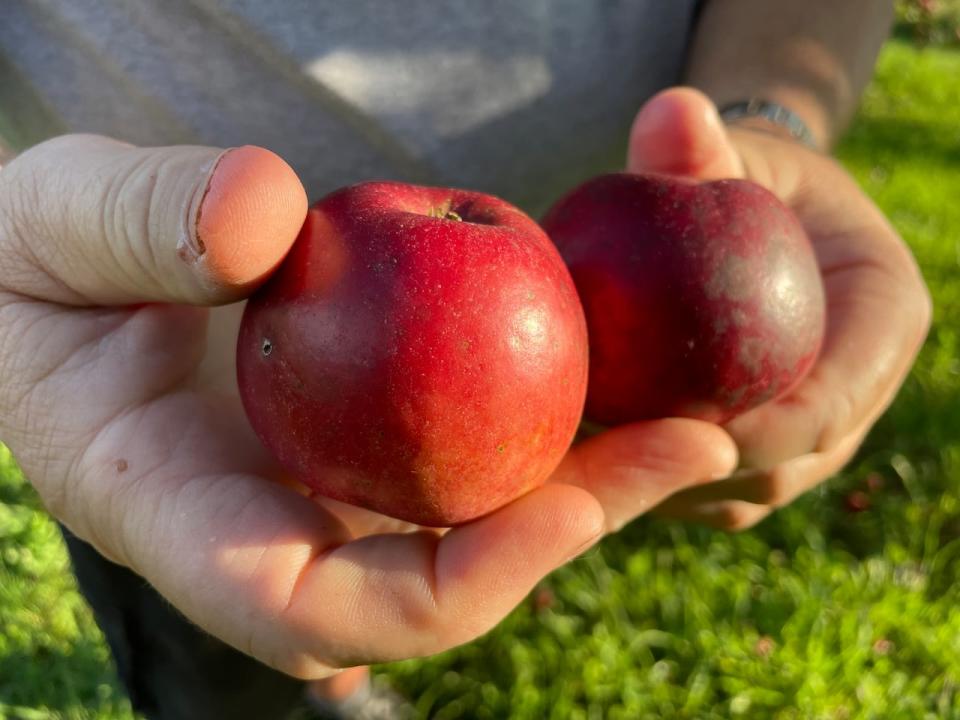


Ottawa Valley farmers are grappling with the consequences of a rainy summer as the season’s downpours disrupt their operations and threaten their crops.
Rainfall totals measured at the Ottawa airport soared to around 405 millimetres since June — far exceeding the usual 264 millimetres, according to Environment and Climate Change Canada.
Michel Villeneuve, the owner of a fruit farm in Clarence Rockland, said all this rain has been “really, really bad.”
“We won’t have a fall harvest at all, zero. Everything has been affected by the rain,” he said.

Villeneuve grows pears, apples, blueberries, raspberries and cherries. (Joseph Tunney/CBC)
Villeneuve grows pears, apples, blueberries, raspberries, and cherries, but the prolonged periods of high humidity have prevented the fruit and plants from being able to properly dry out.
For the first time, Villeneuve said he saw some blueberries rot on the plant themselves.
The farm’s apples have also been severely affected, with very few remaining on the trees after falling about a month early. Some have developed a lot of brown spots due to a fungal disease called scab, further damaging the quality of the fruit.
“There’s nothing we could do with rain. When it’s dry, we can water. That’s simple. We can irrigate. But when it’s raining excessively, we don’t have access to the tap. We can’t close it,” Villeneuve said.
To help protect against the rain, Villeneuve’s farm has turned to more resistant plant varieties, he said.


Villeneuve says some apples have developed brown spots due to a fungal disease called scab, further damaging the quality of the fruit. (Joseph Tunney/CBC)
‘It’s a guessing game at this point’
Andrea McCoy-Naperstkow, the Ontario Federation of Agriculture regional director for Arnprior, Lanark, Renfrew and Ottawa, said heavy rainfall leaves “little ponds” on crops, raises water levels in nearby rivers and has led to some flooding in areas like the Carp River.
McCoy-Naperstkow operates a crop and beef farm with her husband in Lanark County and said unpredictable weather patterns have made it increasingly difficult for farmers to plan their harvests.
“It’s a guessing game at this point,” she said. “The harvest could be between the next month or so to December.”
Some farmers are adapting to the changing climate by growing plants using water-based nutrient solutions instead of soil.
“Farming is not for the faint of heart,” McCoy-Naperstkow said. “But if we didn’t love it, we wouldn’t do it.”